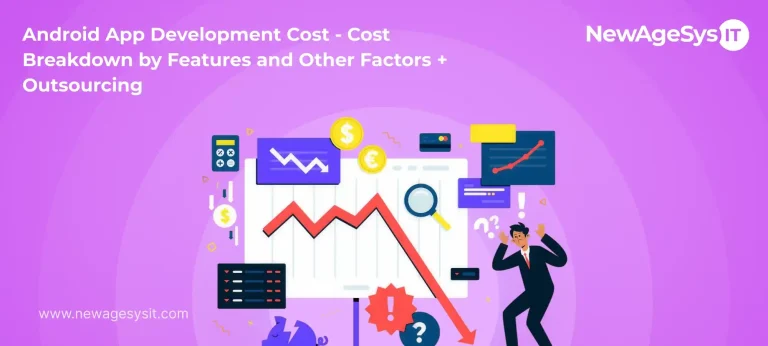The ever-changing world of web technology demands a sharp focus on building secure web applications to protect developers and businesses alike. In 2025, the online world faces heightened security risks, making cybersecurity a non-negotiable part of web application development services.
To stay ahead, a modern web development company has to make security the foundation of every step—from draft designs to deployment. This strategy involves implementing advanced frameworks, using secure logins, and performing regular security sweeps to address potential risks.
Placing security integration as a foundational principle in app development ensures user data remains protected while strengthening a company’s market credibility.
In this post, we’ll discuss the vital measures to ensure your web apps stay resilient against emerging threats in 2025 and the future.
Here’s A List of 9 Best Practices for Building Secure Web Applications
Focus on Accessibility
Accessibility is one of the foremost elements that hold a crucial place in web applications. Organizations should ensure that everyone, including people with special abilities, can easily use and enjoy the application. Such a focus will help the firms to focus on design practices that will make navigation easier for all. Let’s say, visually impaired people or any differently-abled individuals can interact with a website or app easily through clear text, accurate labeling of buttons, and a good color contrast.
Accessibility measures ensure your web app is secure by minimizing the risk of excluding potential users. Most of the web app development services New Jersey and also across the world prioritize these practices to build a secure online landscape. It will help organizations to abide by legal needs and also to expand the audience reach by developing user-friendly apps.
Use of Modern Development Frameworks
In the process of building secure web applications, developers depend on contemporary frameworks that come packed with pre-tested tools and security safeguards. When organizations use these frameworks, it assists developers in focusing on the creation of safe code instead of battling the pitfalls of low-level programming.
Do you know that frameworks come packed with various tools such as input validation and access controls? Yes, these tools make it much harder for hackers to pull off attacks like SQL injection and cross-site scripting (XSS). The advanced frameworks now come with built-in tools for secure setups and updates, keeping security tight. Integrating these frameworks into the process enables developers to prioritize security, producing web apps that protect data and perform safely for users.
Establish Security from the Base
One of the primary steps to a solid and secure web application is establishing a powerful security base. By starting with this approach, security becomes a core aspect of the development process, not something that needs to be tackled at the last moment. By integrating security into the heart of the development phase, developers can locate vulnerabilities early, practice secure coding, and stick to ongoing security testing during every stage.
The foundation of secure web apps is addressing and learning from past security gaps. One way to shield your web app and safeguard user data is by making HTTPS non-negotiable. It ensures secure data transmissions and increases user confidence. With the implementation of multi-factor authentication (MFA) and role-based access control (RBAC), organizations can secure sensitive areas of the application.
Embrace a Mobile-First Approach
Putting mobile users first is a critical step in creating secure and reliable web applications. The mobile-first approach ensures key functions are customized to the growing majority of smartphone users. Central to this technique is responsive design, which helps websites gracefully adapt to screens of varying dimensions. It helps to create a consistent user experience for users on any device.
Adding progressive web apps (PWAs) improves mobile functionality, delivering fast, reliable applications that offer a native-line experience directly via web browsers. Creating mobile-first designs allows developers to deliver engaging experiences while strengthening security with HTTPS and other reliable authentication systems.
Performance Optimization
Optimizing performance is essential for developing web applications that are both fast and safe. By adjusting media and image files, it will offer a solid way to cut down on load time significantly. Trimming down image sizes without compromising on clarity helps developers create apps that feel quicker and more seamless for users. Instead of loading everything at once, lazy loading skips non-important resources for later, making the initial load faster and reducing pressure on the server.
Efficient caching systems, like browser and server-side caching, are great for holding onto commonly requested data temporarily, which boosts speed and lowers server demands. Implementing these practices improves functionality and secures web applications, lowering the risk of breaches while ensuring users are more satisfied. By using these optimization strategies, developers can build apps that are speedy, reliable, and secure.
Use of Cloud-Native Technologies
Building secure web applications means leaning on cloud-native tools like microservices, Docker containers, and serverless setups. By breaking apps into smaller, independent pieces, microservices architecture helps developers create flexible, scalable, and secure systems. Docker, containerization ensures apps and their dependencies are packaged together, guaranteeing a reliable environment whether you’re in development or production.
By isolating applications from each other, this strategy not only strengthens security but also makes deployment easier. Serverless computing takes server management off your plate, so developers can concentrate on coding while resources scale automatically to match the workload. For web development companies in New Jersey, adopting cloud-native approaches means improved security and quicker project completion to satisfy client expectations.
Implement Robust Testing Strategies
If you want your web app to be safe, smart testing strategies are non-negotiable. By relying on cutting-edge tools, automated testing quickly reveals vulnerabilities, making manual testing seem like a time-sink. By performing thousands of tests at the same time, these tools provide full coverage of attack points, which is critical given the current security risks.
Through CI/CD integration, automated security tests occur consistently, keeping security at the forefront of the entire development process. Additionally, incorporating user testing provides valuable insights into how real users interact with the application, helping to uncover usability issues that automated tools might miss. When combined, these strategies form a solid foundation that strengthens the defenses of web applications, protecting them more effectively from cyber threats.
Use of Version Control and Collaboration Tools
To develop secure web applications, having version control and team-friendly tools is a must. With Git, teams can work on code at the same time and track every little change without worrying about messy overlaps. GitHub and GitLab make coding projects smoother by offering cloud repositories that support teamwork, streamline code reviews, and handle issue tracking.
Using these tools alongside IDEs (Integrated Development Environments) eliminates the back-and-forth, letting developers write, test, and debug all within a single workspace. Project management tools bring it all together, organizing tasks, schedules, and team roles so everyone stays focused on the same goals.
Optimizing for Core Web Vitals
To create secure and user-friendly web apps, optimizing for Core Web Vitals is a must since it improves both performance and SEO rankings. Google PageSpeed Insights helps you understand how your website is performing by digging into essential metrics like Largest Contentful Paint (LCP) and Cumulative Layout Shift (CLS). Integrated within Chrome DevTools, Lighthouse is an open-source auditing tool that empowers developers to enhance web application performance, accessibility, and SEO to meet industry standards.
Developers can use the Web Vitals Chrome Extension to monitor key metrics instantly while users are navigating the site. Chrome DevTools is a developer’s best friend for debugging, identifying slow spots, and upgrading security through smarter optimization. Together, these solutions offer a full-scale method for enhancing Core Web Vitals, which helps make websites safer and more user-friendly.
Final Thoughts…
When it comes down to it, locking down web applications in 2025 requires a smart combo of technical tools and a commitment to staying educated. Safeguarding web applications in 2025 means combining strong security features and round-the-clock monitoring.
Developers who follow the above-outlined best practices can drastically cut down on risks and make their applications tougher against constantly changing cyber threats. In the fast-moving world of tech, staying a step ahead of threats is key to keeping web applications safe and sound.
At NewAgeSysIT, we’re passionate about being a top player in web development, especially when it comes to web application security enhancement services. Your applications deserve both functionality and security, and we deliver on both fronts with advanced measures that adapt to the latest digital threats.
Companies partnering with us can rely on our support to secure their apps and protect private data effectively. For further details, reach out to our team today!



















